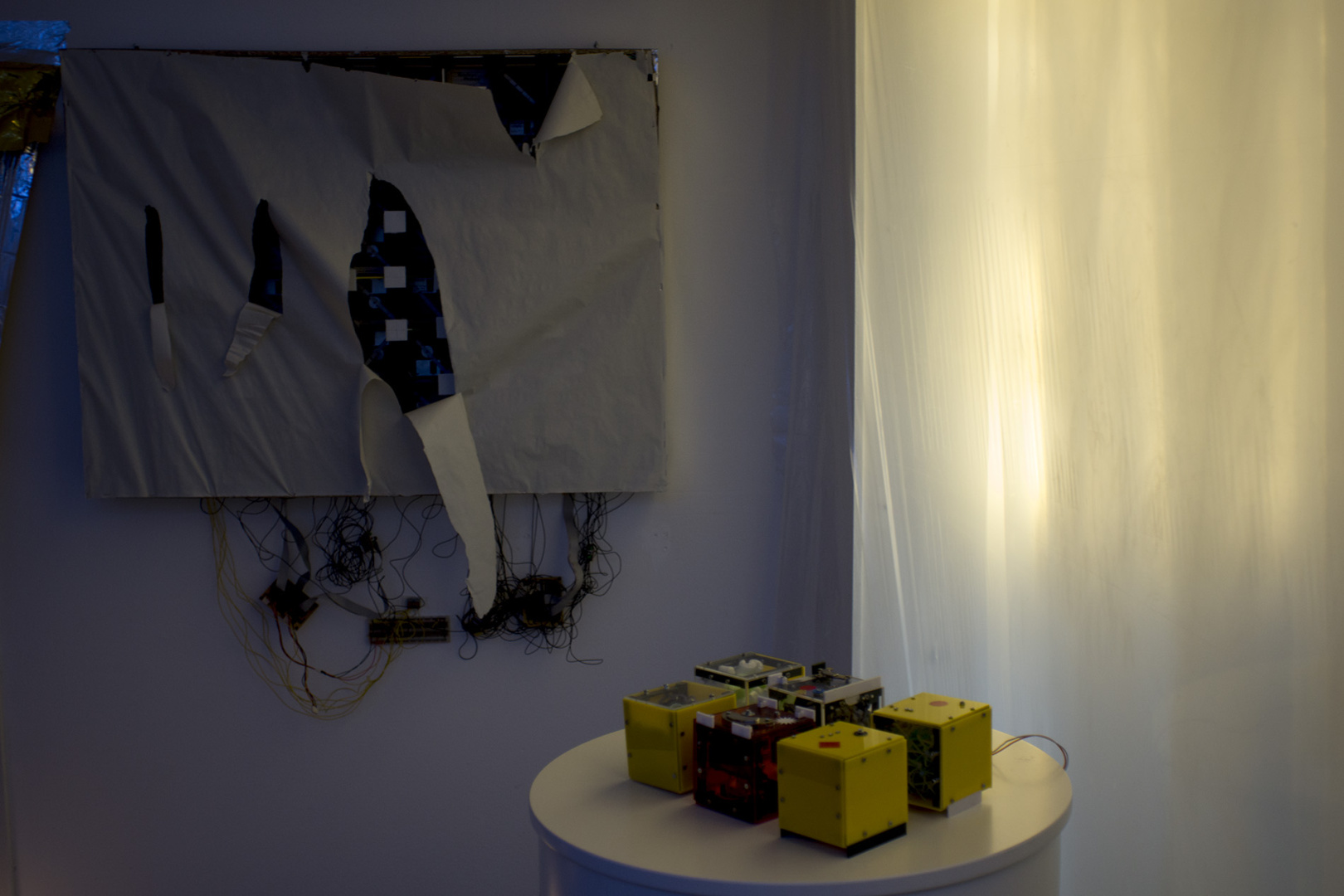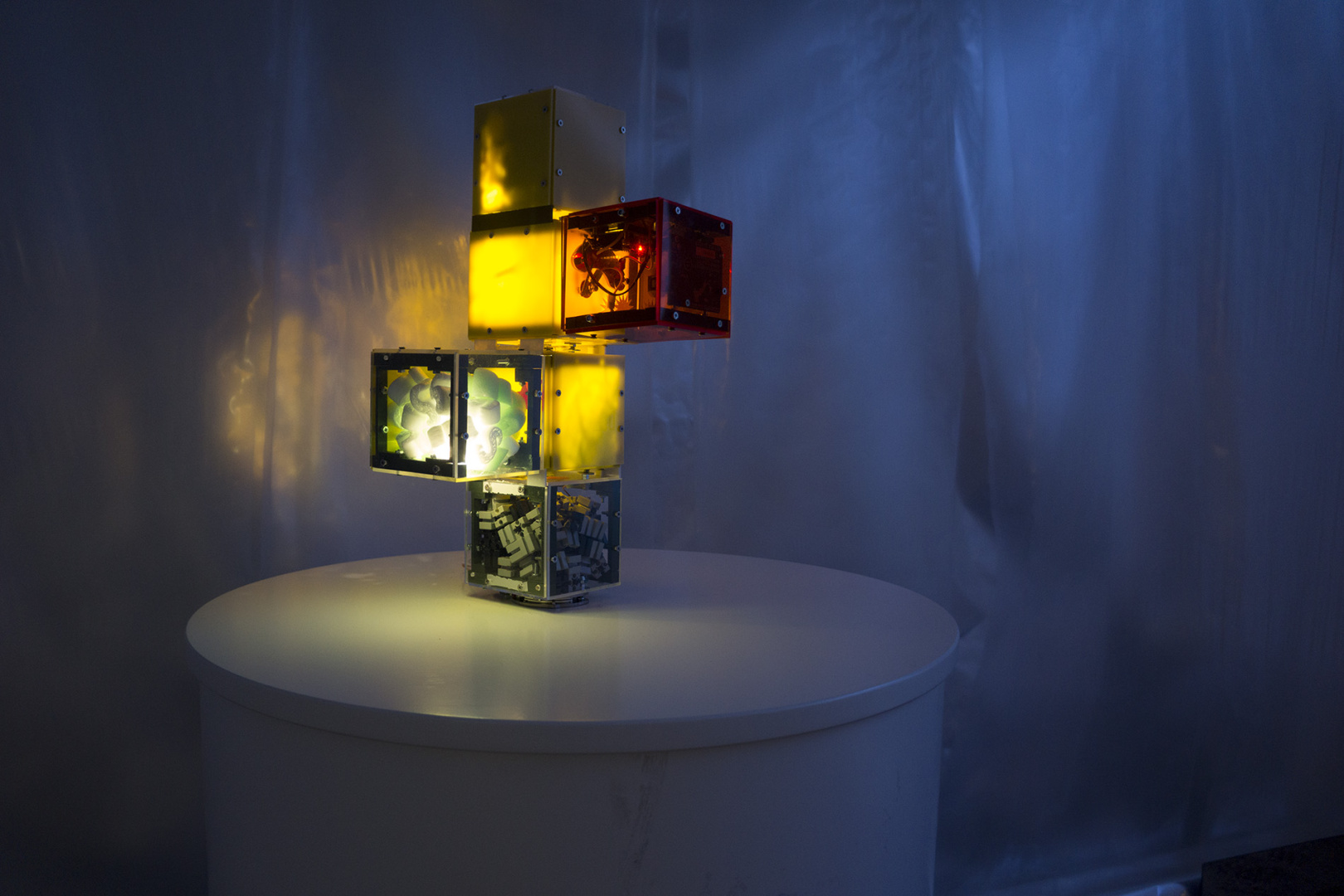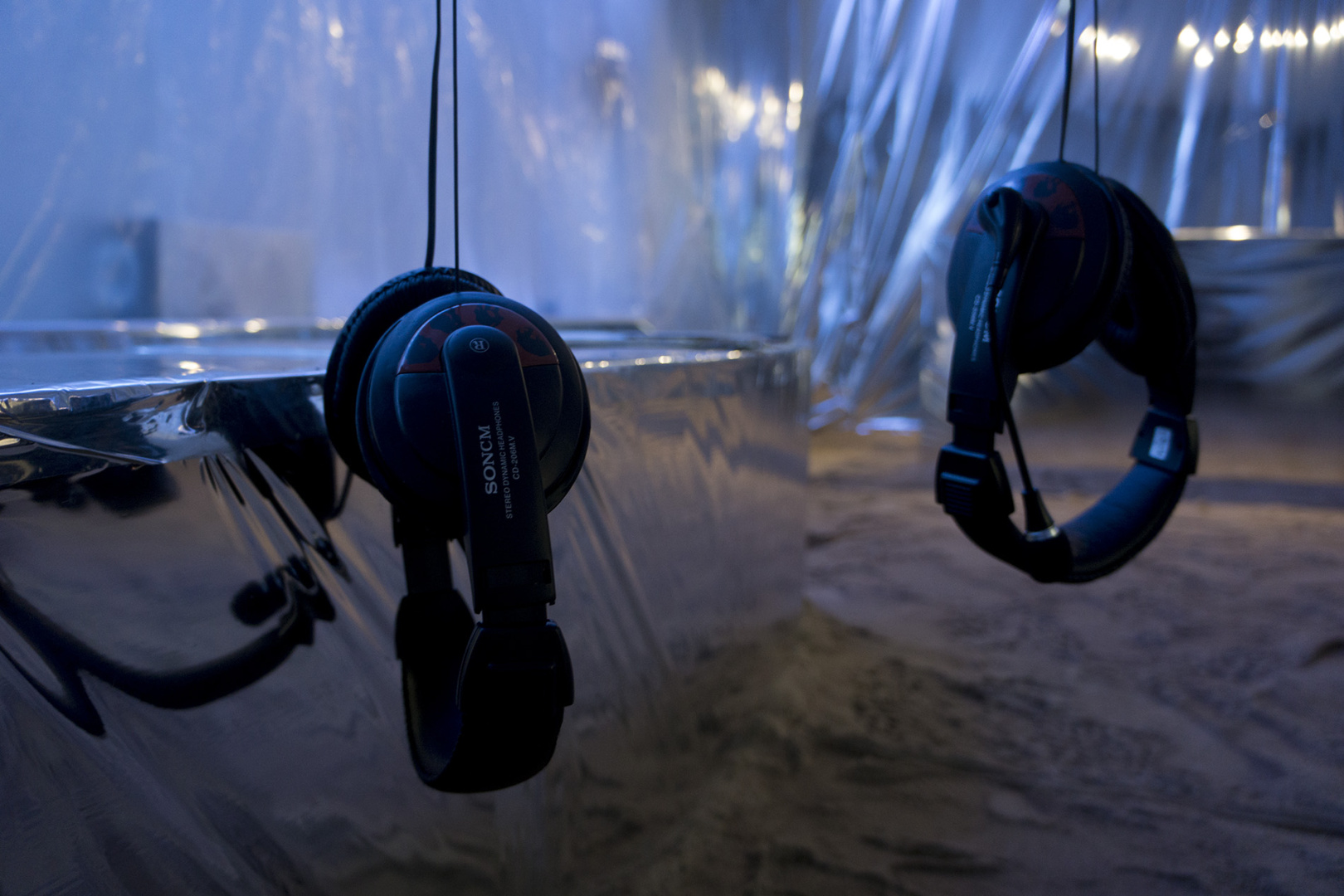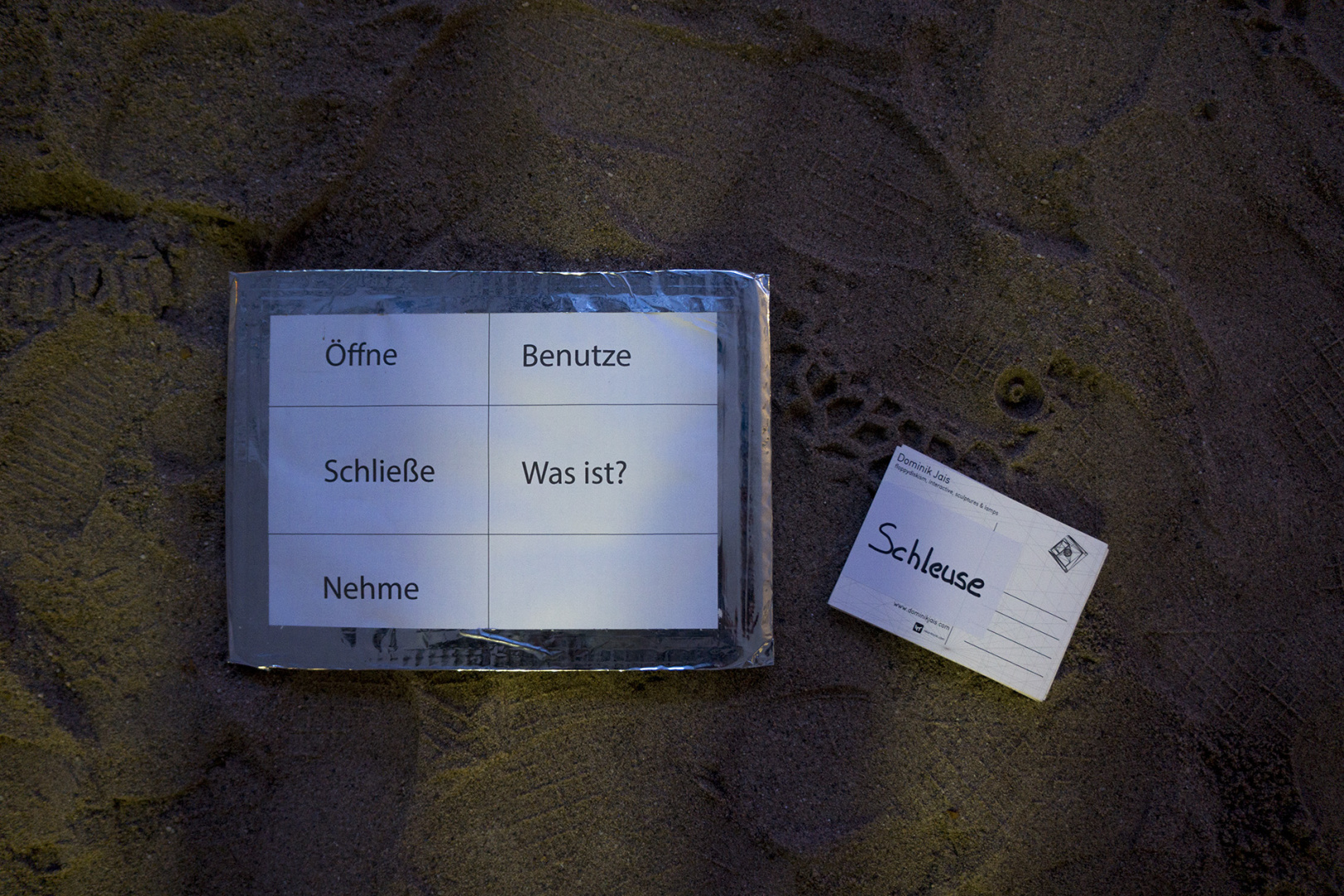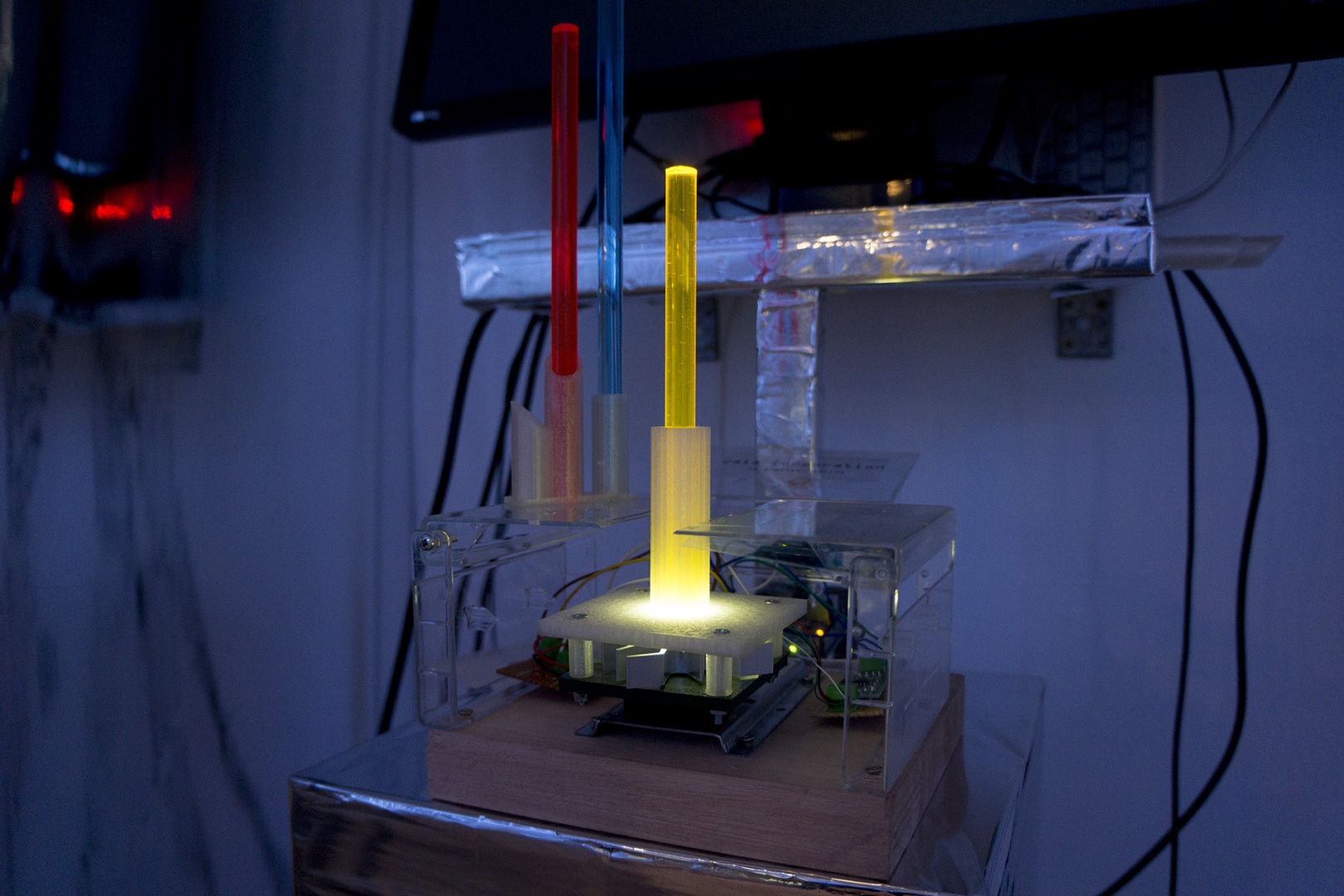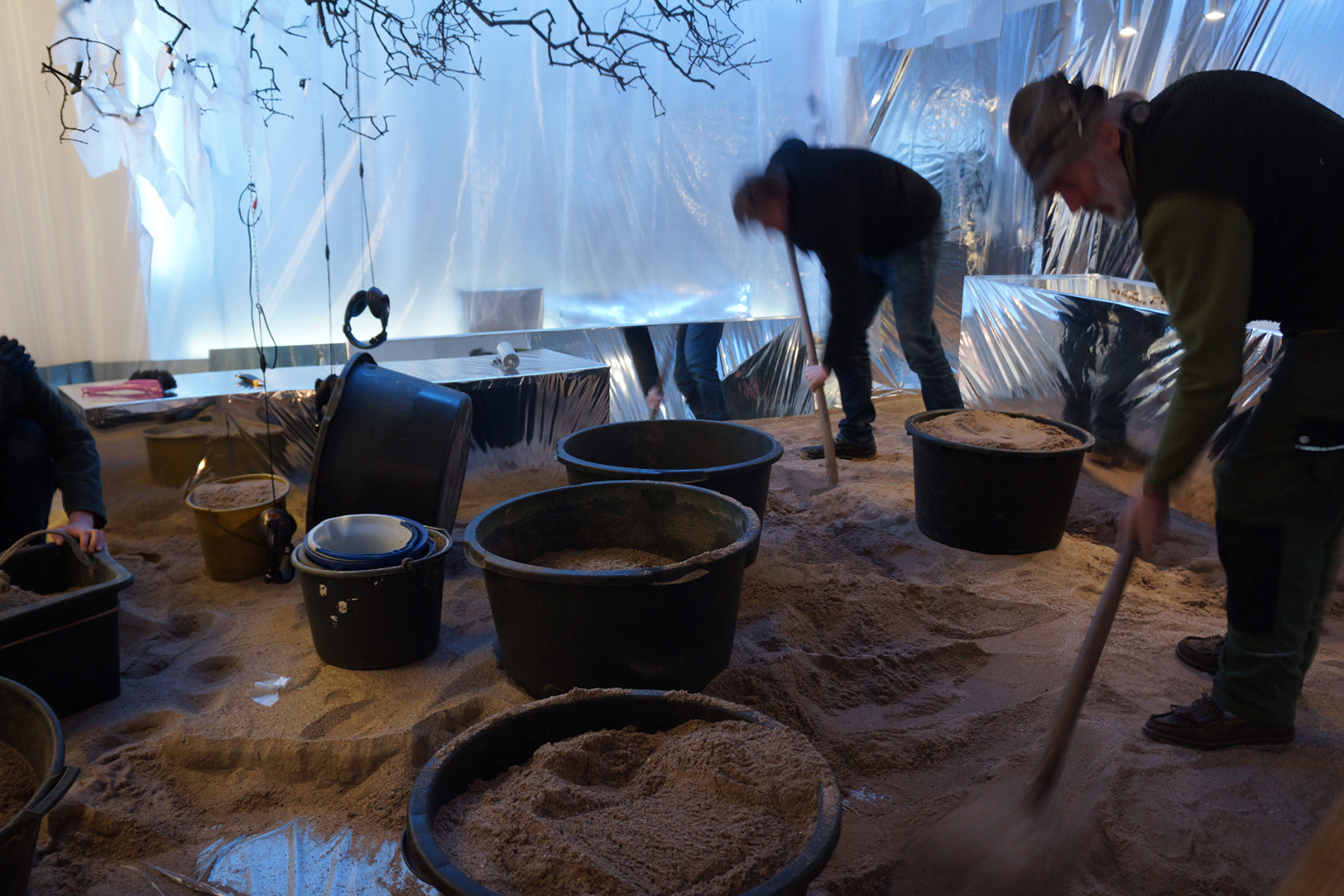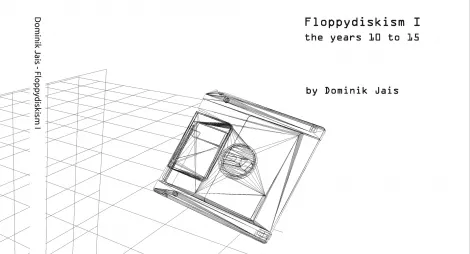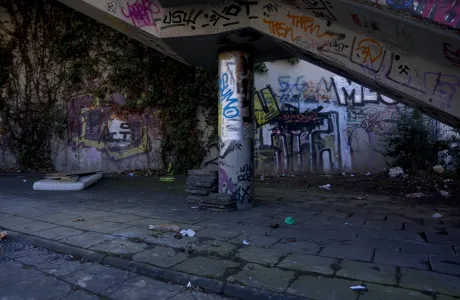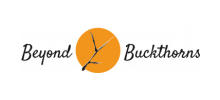On a beautiful spring day we sat for brunch at the gallery „Clowns und Pferde“ in Essen Frohnhausen, Germany. At some point we sighed “the beautiful space ship”; a sentence first spoken by André during the dismantling of the C74 space ship in 2014. When Bianca, the owner of the gallery, let us know that in November she would like to build another room-in-room-installation I said “the beautiful space ship returns!”. This sentence found its way into the exhibitions official title. The starting shot for the new installation and performance art was given.
The C74 Crew
The crew consisted of the same members as in 2014. Additionally Lara Peters was on board. - Bianca Wickinghoff - Room-architect / Atmosphere / Storyline / Stations - Lara Peters - Room-architect / Atmosphere - Florian Patzke - Ideas / Pool - Klaus Warzecha - Coding / Soldering master - André Schiegler - Pool / Always-Available© - Dominik Jais - Gamification / Storyline / Stations -Michael Knak Atmo / Sound-design Additionally we got some helping hands - Lumia - Mikko For sure I have forgotten someone. If you think you should be on that list drop me a line.
Discussing the Plan
In June / July we had first preliminary discussions. In my opinion the installation had to be a planet mission. I also suggested that the surface has to be sand and that we need some kind of tree within it. The tree as something organic was very important to me – we had a dragon tree at the C74. In the beginning we didn’t get ahead. We struggled with details and didn’t get any further with the actual storyline. First we discussed whether the room-in-room should be a planet or just a creation of imagination or if the room should be part planet part space ship, etc. We also headed towards a room without any stations – only the room itself. After some clearing phone calls with Klaus and Bianca we got our basic facts together:
- It is a planetary mission – the C74 has landed on a class-m-planet
- There will be stations – the room is too small to stand for itself
- The visitors will come with us onto the planet’s surface – we don’t know if it is Earth
- We tell a story and let the visitor discover that story
- The planet is cold and uninhabited, if possible super bright
- We don’t buy new materials if possible – we only use materials from our pool
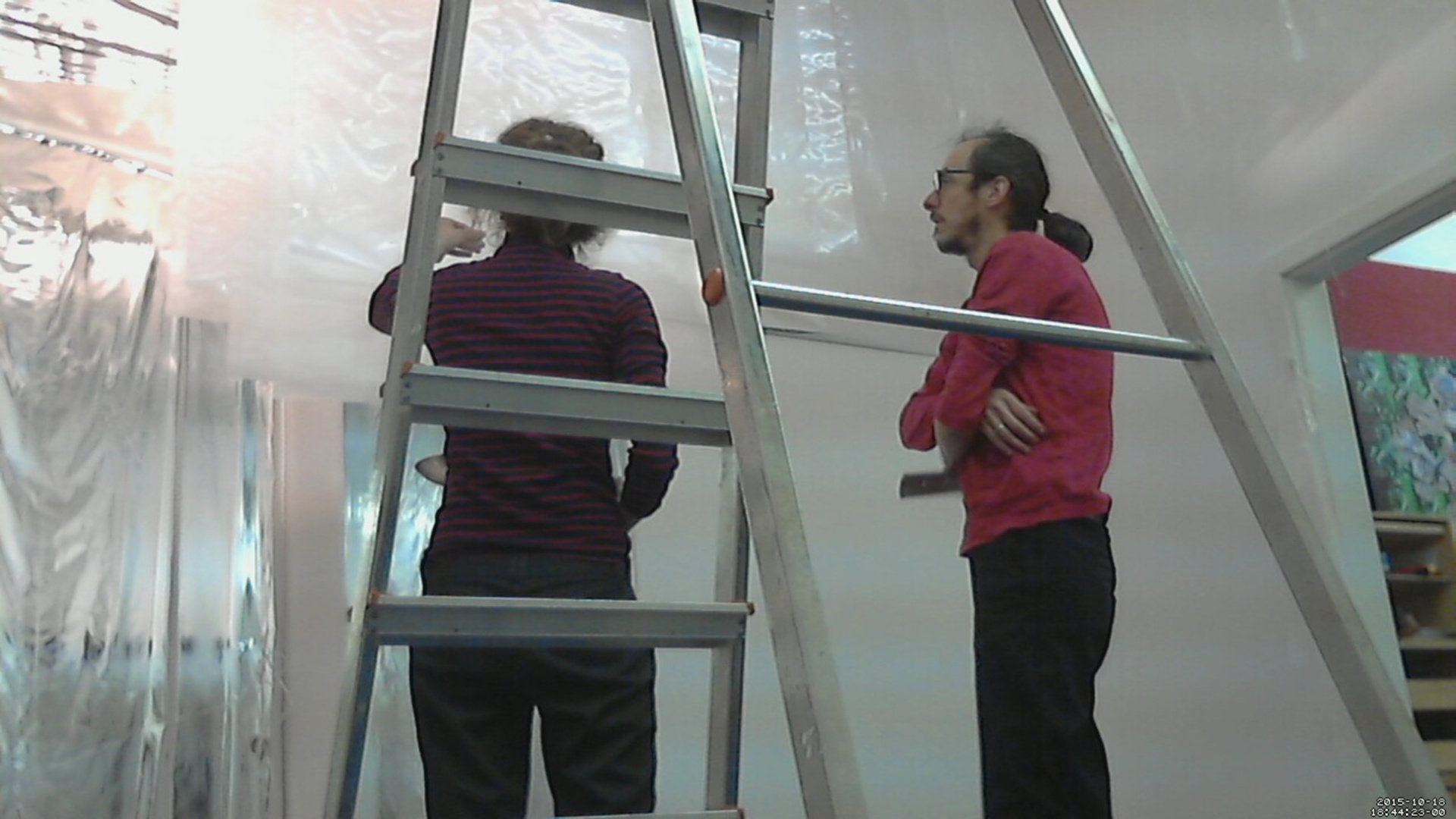
Let's do it! - Build a gamified room-installation
Bianca and Lara started to develop the Look & Feel of the planet while I was writing the storyline and gameplay. First Bianca organized the aluminum foil; she traded wood for it with Lex Spielmann. She also organized the plastic foil we used for the ceiling. In the meantime I wrote the press release. Bianca designed the flyer. During the creation of the different stations the storyline developed further. When I created the station “Fortress of Solidarity Selector” and the corresponding videos the final story developed: At a given time in the past the inhabitants of the planet the C74 landed on were very happy about having put into operation an AI. This AI was controlled by the world-military-council which outsourced maintenance and security to the “Jais Corporation” - the company which created the AI in the first place. Protest from the population and warning scientists were fought by the police & military with all means. The AI starts to administer the planets resources…. Then the C74 lands on this planet. The crew seems themselves confronted with a riddle: Where are they and what has happened? For the planets surfaces we used sand so it looks cold and deserted, based loosely on: “there is no life on Mars”. The dead tree hangs in the middle of the room supporting the Look & Feel. Most of the walls were covered in aluminum foil. Additionally we used mirrors. This made the room look taller. On the ceiling we hanged different sized semi-transparent plastic foil. This made it possible to create a cave for “the eternal life”. It also created a “back-breaking” -feeling while on the other side someone could feel much “lifted” by it. Visitors could sit beneath the tree and listen to the Atmo or music coming from one of the 3 mp3-players. The visitor could stay within the room as long as he wants – if he’d likes to play the interactive performance time ticks: He must solve the puzzle within 15 minutes.
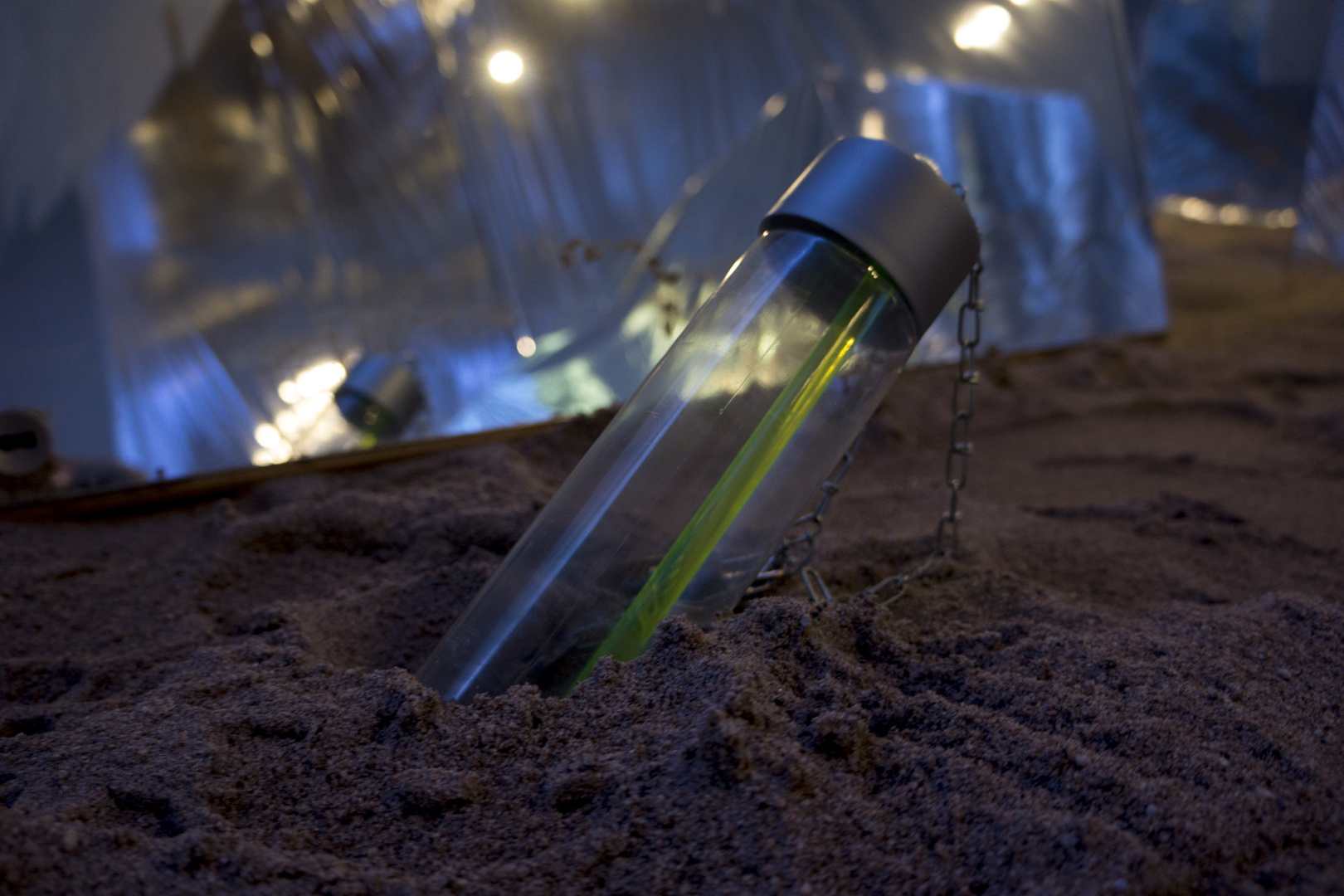
Gamification - let's play it
Beneath the storyline I hid a game path. The entire installation was created as a 15 minutes analog Point-to-Click-Adventure (think of it as participatory art installation, or an interactive art installation). The visitors got inventory pads as well as a verb pad. By combining both he could make the Gamemaker do things. For example the first inventory pad was “lock”. By combining it with “open” he could enter the planet through the lock. On the planet new inventory cards were handed out. The idea is based loosely on Adventures like Zak McKraken or Monkey Island. The gameplay path starts with finding a small combination locked vessel. Inside the vessel is a colored stick. There are other free available sticks around at the Information System (Fortress of Solidarity Selector), another item in the inventory. The visitor will now try to use the available colored stick in the information system to play videos. While watching the videos the visitor gets to know the planets history. Video 1 is the day of the starting of the AI. It shows an anchor woman reading the news. Video 2 shows what the AI finds out about humanity. Video 3 shows a scientist telling us about the problem the AI causes. Video 4 is the solution video – the one that can only be viewed if the combination lock is opened and the final stick inserted into the information system. Once knowing the story the visitor can start solving the puzzles. The order in which the puzzles are solved doesn’t matter because he now has all the inventory cards and the puzzles are not interconnected (although we thought about doing that). Bianca created the artwork “the eternal life”. It consists of dead insects arranged on a mirror showing a number. Insects were the last living inhabitants on the planet. They fought radiation much longer than any other living creature, but at the end they died giving us one solution to the puzzle. At the tree we hanged mp3-players and earphones. Listening to the sounds on those mp3-players the visitor could discover another number. The strange construct (another inventory pad) is an interactive analog sculpture. Visitors have to connect cubes onto each other in order to get a number from an LCD screen hidden inside one of the cubes. Once the visitor has all 3 numbers he can open the locked vessel. He gets the stick and could play the last video at the M.A.C. 9000 information system.
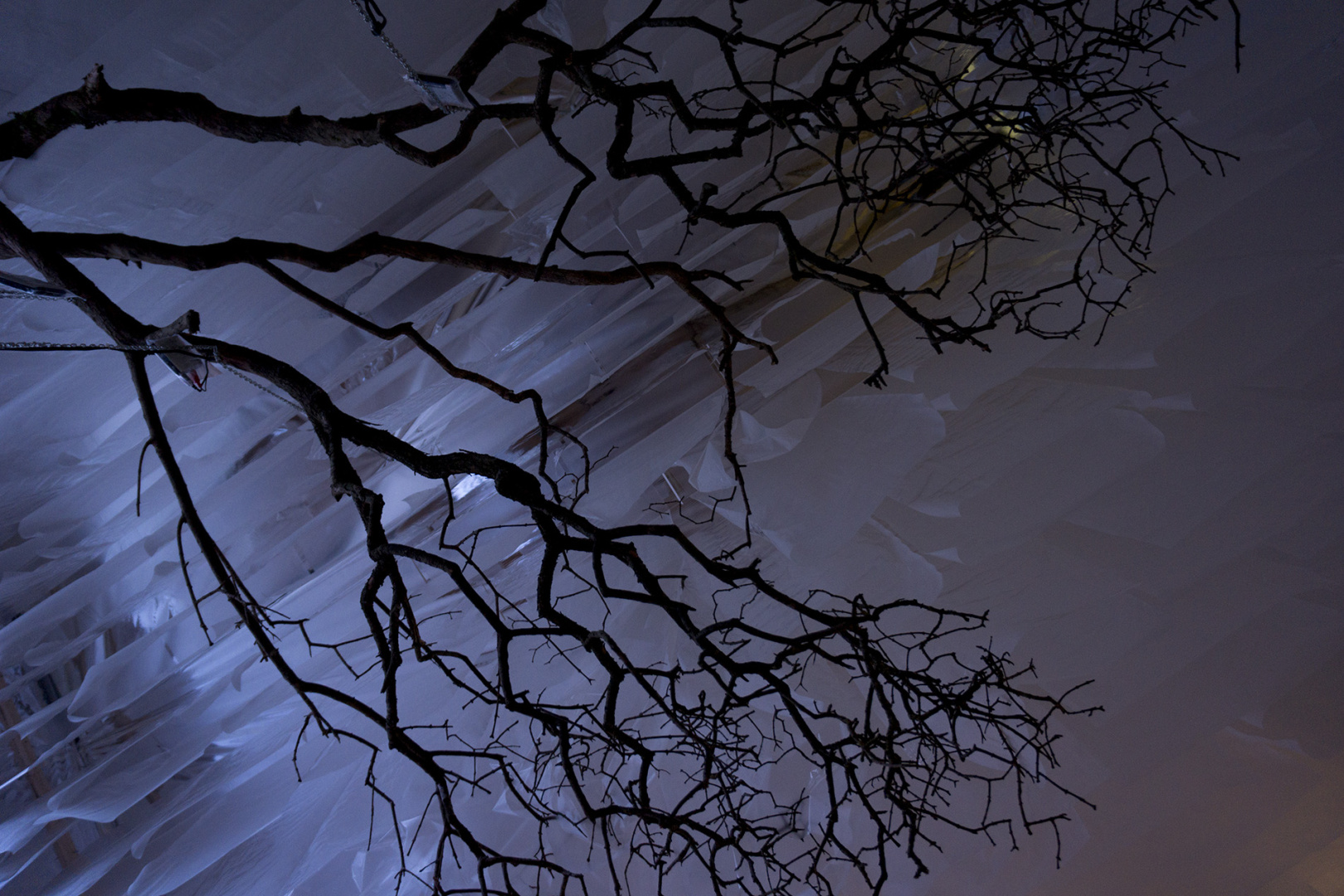
Is this this end?
When I was asked if we are going to create another spaceship in 2016 I said “no”. The team invested more than 500 hours in this room-in-room installation. Hours by helpers, discussion, etc. not counted. If this would be a paid job with an hourly rate of 40 € the installation would have cost 20.000 €. On the plus side we got 1000 € from the city of Essen and 3,50! € as donations for wine (over 10 bottles drunk).

